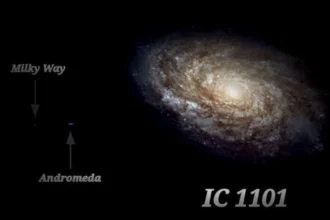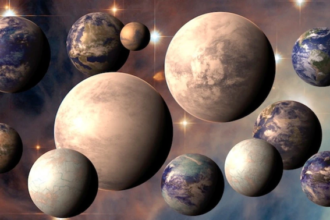The upcoming year promises to be filled with the night sky, offering a variety of celestial wonders for all to appreciate. Many of these wonders are visible without the need for a telescope or extensive travel. From planetary gatherings to the first total lunar eclipse in three years, here are the key astronomy events to anticipate throughout 2025.
Dates of lunar and solar eclipses in 2025
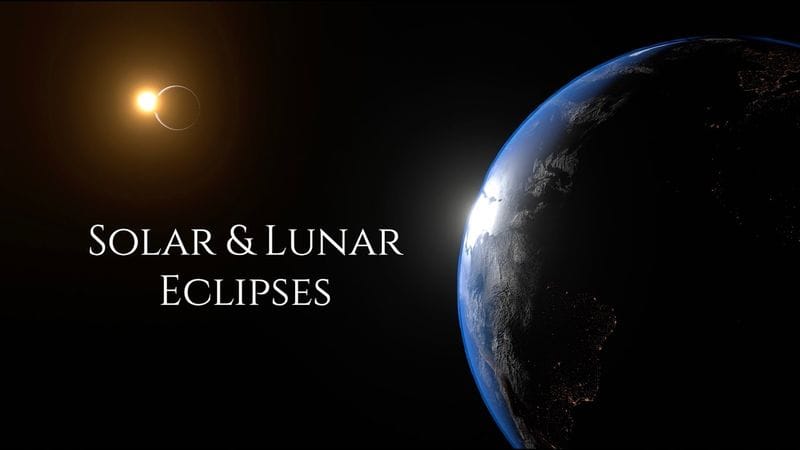
March 14: Total Lunar Eclipse
A complete lunar eclipse will turn the Moon red when it travels over the Earth’s shadow for the first time since 2022. Unlike a complete solar eclipse seen from a limited location, the forthcoming lunar eclipse will be seen throughout North America on Thursday, March 13, into the early hours of Friday, March 14, weather allowing.
- Duration of Total Phase: 1 hour, 5 minutes.
- Visibility: North and South America, Western Europe, West Africa, and the Pacific Ocean.
- Details: The eclipse will occur in the constellation Leo near Virgo’s border.
March 29: Partial Solar Eclipse
This year, there will be one partial solar eclipse, during which the Earth, Sun, and Moon will line up. This is when the Moon blocks some of the Sun’s rays from reaching Earth by passing between the Earth and the Sun. One nearly feels as if someone has bit it.
- Duration: About 4 hours.
- Visibility: North America and the Atlantic Ocean, with the greatest eclipse phase visible at sunrise in Hudson Bay.
- Constellation: Pisces.
September 7: Total Lunar Eclipse
The Sun, Earth, and Moon line up for one complete lunar eclipse. The Moon looks red during a lunar eclipse as the only sunlight that reaches it passes through Earth’s atmosphere. Depending on the circumstances and the time of totality when the Moon becomes red, a total lunar eclipse may last many hours; the longest total lunar eclipse since 2022 will last one hour and 22 minutes.
- Duration of Total Phase: 1 hour, 22 minutes.
- Visibility: Antarctica, Australia, Oceania, Asia, Russia, Africa, and Europe.
- Details: Observed in the constellation Aquarius.
September 21: Partial Solar Eclipse
The final eclipse of 2025 will be a partial solar eclipse between September 21 and 22.
- Duration: Approximately 4.5 hours.
- Visibility: Antarctica, southern Australia, Pacific and Atlantic Oceans.
- Constellation: Virgo.
Key Meteor Showers of 2025
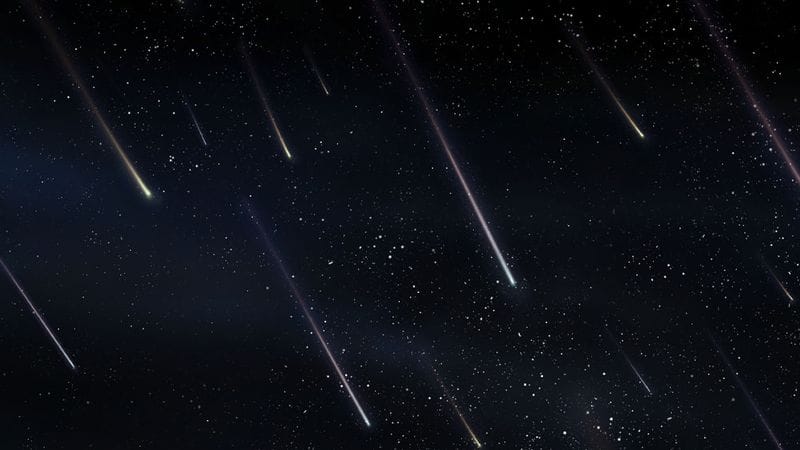
- January 3 – Quadrantids: Up to 120 meteors/hour. The Quadrantids, the first significant meteor shower of 2025, peak on the night of January 3 and into the early morning hours of January 4, differing by time zone. The best viewing is in the Northern Hemisphere during moonless skies.
- April 22 – Lyrids: 18–90 meteors/hour. The second meteor shower of the year is the Lyrid, active from April 16 to 25, with its peak arising on April 23 between 4:30 am and 5:30 am. The Lyrids are the oldest known meteor showers, having been observed for 2,700 years.
- August 12 – Perseids: Up to 100 meteors/hour. The Perseid meteor shower is typically one of the year’s most active and prominent. This year, the Perseids will be concurrent with a dazzling Waning Gibbous Moon, diminishing the total number of meteors that can be observed.
- December 14 – Geminids: Up to 150 meteors/hour. The Geminids will reach their highest point on the night of December 13 into December 14, resulting in one of the year’s most spectacular celestial light displays. In 2025, the annual meteor shower is expected to be exceptionally favourable, as it will take place on a moonless night, enabling observers to witness up to 120 shooting stars per hour.
How to observe planetary alignments in 2025
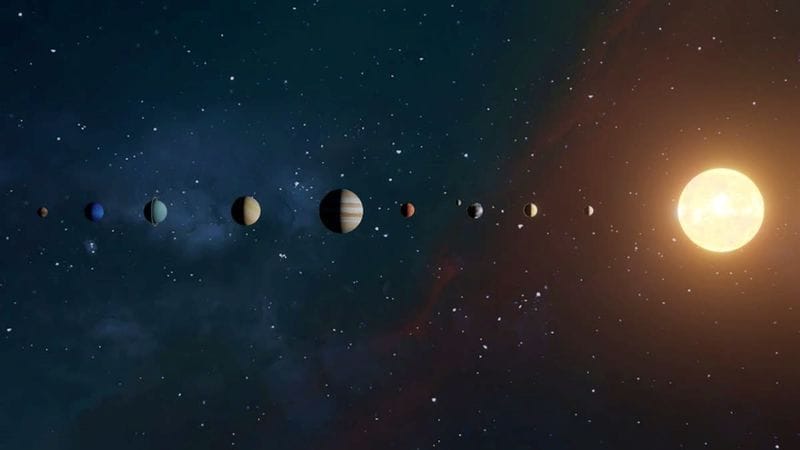
February 28 – Big Planetary Parade: A planetary parade is a unique celestial phenomenon in which planets align in a straight line, creating a visual akin to a parade. While it can be difficult to observe all nine planets at once, two planetary parades are set to take place in 2025, one in January and the other in March. Starting January 21, 2025, six planets—Venus, Mars, Jupiter, Saturn, Neptune, and Uranus—will align, and on March 8, Mercury will also join this celestial parade.
August 12 – Venus and Jupiter Conjunction: On Tuesday, Aug. 12, stargazers are in for a sleepless night as two celestial events take place. The first spectacle will be observable before dawn and will showcase the two most luminous planets in the heavens: Venus and Jupiter. The pairing will be clearly visible without a telescope, with the planets spaced apart by roughly the width of a pinky finger extended at arm’s length. The two brightest planets will appear only 0°52′ apart.
November 25 – Venus and Mercury Conjunction: Venus and Mercury will be in a tight conjunction, with a separation of only 0°59′. Both will be visible beyond the eastern horizon.
Guide to supermoons in 2025
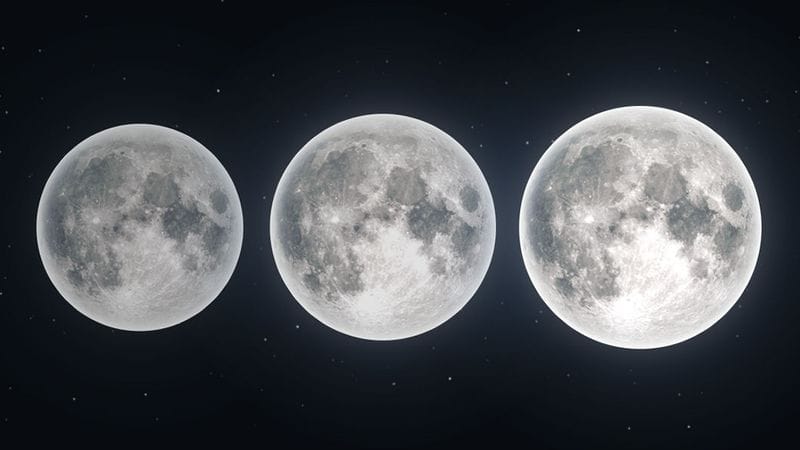
There will be three supermoons in 2025. Their names stem from Native American culture, capturing the essence of natural events and serving as a means of timekeeping through the lunar phases. Supermoons take place when the Moon reaches its nearest point to Earth in its orbit, making it appear as much as 15% brighter and 30% larger than typical full moons.
- October 7: The Hunter’s Moon
- November 5: The Beaver Moon. It is the closest supermoon of 2025, at 356,832 kilometres from Earth.
- December 4: The Cold Moon
Seasonal Highlights
- March 20 – Vernal Equinox: The start of astronomical spring.
- June 21 – Summer Solstice: Marks the beginning of astronomical summer.
- September 22 – Autumnal Equinox: Beginning of fall.
- December 21 – Winter Solstice: The onset of winter.
Notable Close Approaches
- January 4 – Saturn and the Moon: The day after its passage near Venus, the Waxing Crescent Moon approaches Saturn. In some regions of Europe, the Moon blocks Saturn, resulting in a lunar occultation. It is the closest approach until 2031.
- January 16 – Mars Opposition: When the red planet gets closest to Earth, the Sun will completely light its face. It will be visible and brighter all night long than at any other time of the year. The greatest time to see and take pictures of Mars is now. You may see some of the black features on the planet’s orange surface using a medium-sized telescope.
- September 21 – Saturn Opposition: The Sun will ultimately illuminate the ringed planet’s visage, which will be at its closest approach to Earth. The brightness will surpass that of any other season and will be visible throughout the entire night. Saturn and its moons are most easily observed and captured during this period. Rings will gradually thin out post-opposition. Saturn’s ring structure and a few of its brightest moons can be observed with a medium-sized or larger telescope.
Observing Tips
To make the most of these celestial events, here are some practical tips:
- Plan Ahead: Research local timings and visibility zones for each event. Websites like timeanddate.com or astronomy apps can provide precise details.
- Use the Right Equipment: While many events are visible to the naked eye, binoculars or telescopes can greatly enhance your experience. Smartphone attachments for telescopes can also help capture stunning images.
- Find Dark Sky Locations: Urban light pollution can obscure your view. Seek out rural areas or designated dark sky reserves for optimal stargazing conditions.
- Stay Informed: Weather conditions can impact visibility. Monitor forecasts and have a backup plan in case of clouds.
- Stay Comfortable: Bring essentials like a blanket, reclining chair, and warm clothing for nighttime viewing. Snacks and a thermos of hot drinks can make the experience more enjoyable.
2025 is brimming with celestial phenomena promising to captivate novice and seasoned stargazers. Mark your calendar, gather your equipment, and prepare to be amazed by these astronomical wonders. Whether it’s a total lunar eclipse, a meteor shower, or a supermoon lighting up the night sky, the universe offers an unforgettable show this year.







